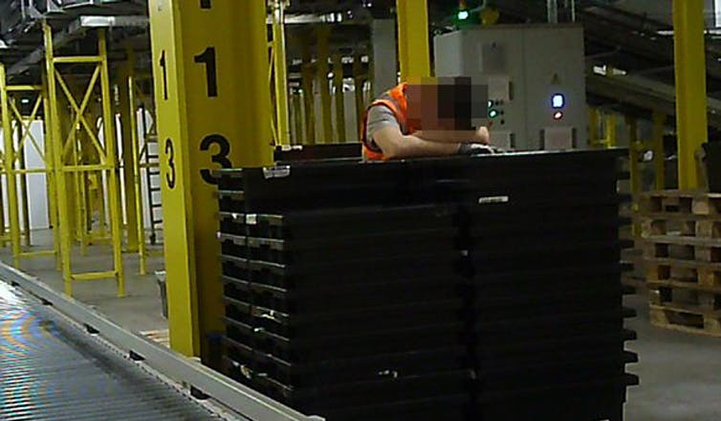An article by Marcos Lima, head of the Marketing and Digital Sales Master’s Programme at EMLV, first published in The Conversation.
“One of Mr. Rockefeller’s most impressive characteristics is patience.”
This 1902 assertion by pioneering journalist Ida Tarbell described John D. Rockefeller, one of the wealthiest men in the world in the early 20th century.
Today, it could as easily be used to describe Jeffrey Preston Bezos, the founder and CEO of Amazon, and currently the richest man on Earth. Bezos had to wait 14 years to see the first positive quarterly result of his company. In another testament to his long-term vision, he recently invested $42 million in the construction of a 10,000-year clock. This 150-meter tall apparatus is being built within a mountain in Texas. It tells time in terms of decades and centuries rather than seconds and minutes, and its “cuckoo” mechanism will be activated only once a year. Bezos believes this gigantic endeavour – based on a prototype designed by the Long Now Foundation – should be a timeless reminder to our species (as well as future civilizations) that humanity should nurture long-term ambitions.
“Relentless” is another way to describe Bezos. This was one of the names he considered for his online book-selling service back in 1997 (in fact, the URL relentless.com is still owned by Amazon and redirects to its main website to this day). His business objectives relentlessly grew from being the world’s largest bookseller, to becoming the “everything store” and then branching out to create the world’s greatest cloud service provider, with Amazon Web Services (providing data storage to clients ranging from NASA to Netflix). Not to mention the founding of Blue Origin, a spaceflight services company whose Latin motto “Gradatim Ferociter” means “Step by step, ferociously”. In 2013 Bezos shocked the media world by snapping up the Washington Post for $250 million, roughly 1% of his wealth at the time, $22 billion. (He’s now up to $106 billion.)
Last year, Amazon raised many eyebrows by crossing into physical distribution territory with the acquisition of Whole Foods Market and its 473 stores in North America and the United Kingdom. This move made the shares of Walmart and other supermarket chains plummet, while raising Amazon’s own stock valuation by $15.6 billion. After the announcement of the deal, the rise in Amazon share prices alone was enough to cover the $13.7 billion cost of acquiring Whole Foods.
More recently, Amazon announced that it would partner with other giants like Berkshire Hathaway and JPMorgan to implement a health care solution for their combined 840,000 employees. Is that the first stage of a road-map to offer health insurance worldwide? Finally, a few weeks ago, we learned that Amazon is in talks with large banks such as JPMorgan Chase to create a checking-account-like service.

The 10,000 year clock being built by Jeff Bezos inside a mountain in Texas.
How big is too big?
As Amazon competes with Apple for the record of becoming the first company in history to be valued at $1 trillion, several experts start to question when antitrust regulation should step in to stop its relentless growth. In a brilliant research note published in the Yale Law Journal, Lina M. Khan argues that current US antitrust laws based on the principle of “consumer welfare” are ill-prepared to deal with what she calls the Amazon paradox: contrary to what antitrust theory predicts, Amazon does not raise its prices in spite of its growing dominance. She cites two reasons for the rationality of everlasting predatory pricing by online e-commerce platforms:
- Pursuing growth over profits has been historically rewarded by investors, who clearly believe in Bezos’ long-term vision.
- Thanks to their dominant size and investor’s faith, Amazon can integrate across distinct business lines (retailer, marketplace, cloud service provider) to create the very infrastructure upon which its rivals came to depend. If, for instance, Amazon notices through its powerful data analytics that one new product category is growing, it can launch its own brand of the same product and rank it higher in its search results, effectively driving traffic and sales away from the newcomers.
Yet whenever claims of monopolistic practices are levered against it, Amazon quickly points out that e-commerce represents less than 10% of brick-and-mortar sales. Furthermore, it claims that Walmart sales alone – over $500 billion in 2017 – are almost three times bigger than Amazon’s. Add to this the fact that prices are kept low at Amazon and you can dismiss any charge of Amazon abusing its dominant position.
These arguments miss the main point raised by Khan in her “Amazon Paradox” note: Amazon should not be persecuted for antitrust based on consumer welfare criteria or overall retail market share dominance. Rather, more modern antitrust laws should focus on the methods online platforms the size of Amazon can use to inhibit competition. These methods include predatory pricing based on real-time analysis of marketplace competitors and vertical integration of logistics. Thanks to Amazon’s highly complementary business models, it has created a physical and online infrastructure empire that is quickly becoming the only competitive way to satisfy the growing need of instant gratification by online shoppers. Lured by the lock-in mechanisms built into the “Prime” subscription services (which offers free next-day delivery and video streaming to subscribers), consumers cannot help but be ecstatic with this online shopping paradise. One quickly understands why Amazon Prime now captures 46% of online shoppers in the US and why the barriers to entry are becoming increasingly insurmountable to upstarts in this field.

An undercover investigation reveals difficult working conditions at Amazon.
Sunday Mirror
The price of instant gratification
Amazon definitely takes its “customer-centric” culture seriously. Few consumers are left unmoved by the killer value proposition it offers: a convenient, fast and reliable way of buying almost anything online. While customers have somewhat fallen out of love with other tech giants like Apple and Google – both of whom recently plunged from 2nd and 3rd places to 29th and 28th places in the annual “Reputation Quotient” list by the Harris Poll – Amazon has remained the first brand in the preference of US consumers for the past five years (with exception of 2015).
Behind stage, this constant battle to keep customers happy does come at a cost to Amazon employees, though. Cases of burnout or exhaustion have been documented in Amazon’s fulfilling centres, with workers reportedly falling asleep standing up during 55-hour-a-week marathons ahead of big events like Christmas or Black Friday. Or consider the story of a young British man whose night shifts in an Amazon warehouse working alongside robots almost destroyed his social life and his psychic health – all for a princely salary of £18,000 ($25,262) a year.
With no visible sense of irony, Amazon has recently produced a “Prime Original” TV series called Electric Dreams that portrays dystopic techno-futures envisioned by Philip K. Dick. In the second episode, called “Autofac”, they describe a post-apocalyptic world in which the last survivors of the human race are besieged by robot-driven factories that ignore the end of the world and keep pumping out drone-delivered boxes of products no one needs.

Amazon’s own vision of the future in their new TV series Electric Dreams: a post-apocalyptic world ruled by drones and robots. Author provided
Antitrust laws need to evolve to catch up with 21st-century business practices in order to create a healthier competitive environment in the e-commerce sphere. This is no longer about saving the mom-and-pop stores in main street or keeping brick-and-mortar bookstores from disappearing: it is about making sure that future innovative players can thrive online without having to use the monopolistic infrastructure of Amazon or be confronted with their anti-competitive practices. Hopefully such measures will also limit the drive for lowering prices at all costs, with all the social and environmental consequences this race to the bottom entails.
![]() In 1911, Rockefeller’s Standard Oil was broken up in 34 companies by the Sherman Antitrust act, separating them into distinctive activities of oil producing, transporting, refining and marketing. If “data is the new oil”, monopolistic data-driven platforms of today should maybe suffer the same fate in the name of competition, innovation and employee well-being.
In 1911, Rockefeller’s Standard Oil was broken up in 34 companies by the Sherman Antitrust act, separating them into distinctive activities of oil producing, transporting, refining and marketing. If “data is the new oil”, monopolistic data-driven platforms of today should maybe suffer the same fate in the name of competition, innovation and employee well-being.





















